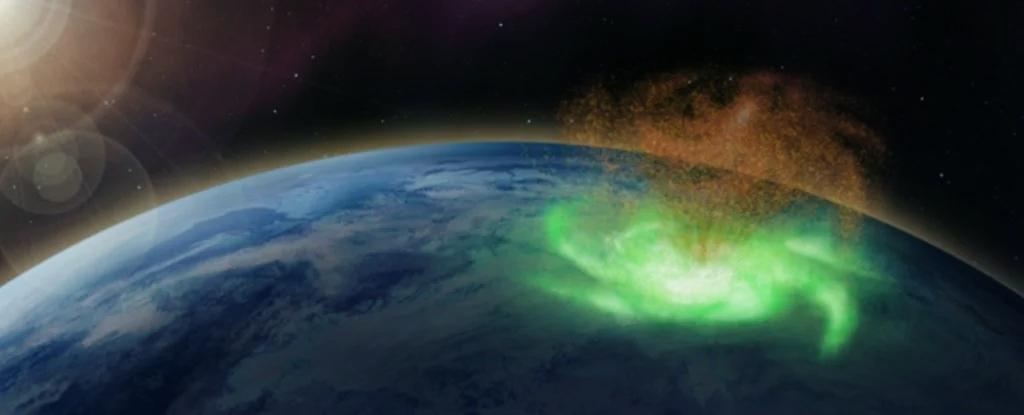 |
Illustration of the space hurricane. (Qing-He Zhang,
Shandong University) |
A hurricane has been discovered in Earth's upper atmosphere
for the first time. Satellites captured a large swirling swirl of plasma
reaching far into the magnetosphere in 2014, which lasted for hours before
dissipating.
While this is the first time we've seen something like it,
its discovery indicates that space hurricanes, as they're called, could be a
common planetary phenomenon.
Space plasma hurricanes were previously unknown, so to prove
their presence with such a striking observation is amazing, according to space
environment physicist Mike Lockwood.
Hurricanes are common in the Earth's lower atmosphere:
large, spinning weather systems with strong winds and lashing rain that can
inflict significant amounts of damage in a short period of time.
They're still not unusual on other people's bodies: Jupiter
and Saturn, in particular, are highly chaotic worlds, with roiling plasma
tornadoes deep inside the Sun's atmosphere.
The latest research shows that space hurricanes are close to
their lower-atmosphere cousins.
The results were discovered during a retrospective study led
by Shandong University in China on August 20, 2014. The hurricane appeared over
the North Pole, with a diameter of 1,000 kilometers, according to the results
(621 miles).
It was composed of plasma with several spiral arms spinning
in an anticlockwise direction at speeds up to 2,100 meters per second at
altitudes ranging from 110 to 860 kilometers (6,900 feet per second). The
middle, on the other hand, was almost motionless, just like hurricanes at lower
altitudes.
The space hurricane, on the other hand, rained electrons
into the ionosphere, unlike other hurricanes. The outcome was a beautiful
aurora in the form of a cyclone under the hurricane. It lasted nearly eight
hours and deposited huge quantities of energy and momentum into the ionosphere.
The rest of the time, it was silent, which raised a puzzle.
The solar wind typically rains charged particles into the ionosphere, resulting
in glowing green aurorae at higher latitudes, but solar conditions were
relatively quiet at the time. As a result, the team switched to modeling to
find out what was causing the plasma commotion.
Lockwood clarified that tropical storms are associated with
vast quantities of energy, and that these space hurricanes must be produced by
an unusually large and rapid transfer of solar wind through the Earth's upper
atmosphere, releasing energy and charged particles.
We know that reconnecting magnetic field lines can transfer
solar wind energy into the magnetosphere and ionosphere, so the researchers
modeled the process and discovered that even when the solar wind is weak, a
reconnecting interplanetary magnetic field can generate the features seen in
the space hurricane. In fact, the low solar wind may be crucial because it
encourages magnetic reconnection.
It also suggests that such storms are likely to occur
regularly.
Since plasma and magnetic fields in the atmospheres of
planets exist everywhere in the world, Lockwood claims that space hurricanes should
be a natural occurrence.
There are also consequences for Earth. Knowing that space
hurricanes can generate aurorae and what these aurorae look like might help us
spot more of these storms in the future.
It also demonstrates that, even when geomagnetic conditions
are relatively stable, space can create extreme weather that has an effect on
life on Earth as well as the skies above it.
This research indicates that localized extreme geomagnetic
disruption and energy depositions similar to those seen during super storms
could still occur. According to space physics professor Qing-He Zhang,
"this will update our understanding of the solar wind-magnetosphere-ionosphere
coupling mechanism under extremely quiet geomagnetic conditions."
Furthermore, the space hurricane would cause major space
weather effects such as increased satellite drag, interference with High
Frequency radio communications, and increased errors in over-the-horizon radar
location, satellite navigation, and communication systems.




0 Comments